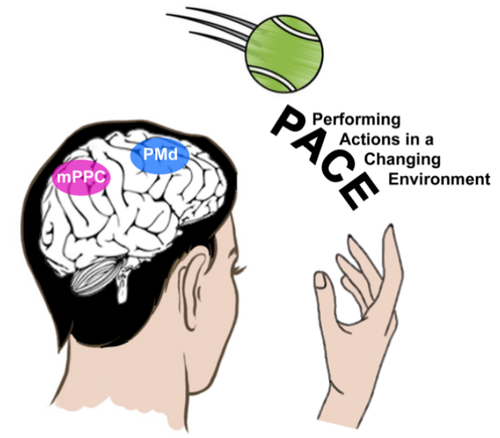- Home
- Research Interests Apri sottomenù
- Publications
- People
-
Projects
Apri sottomenù
- Progetto PNC - Fit4MedRob - Interfacce Neurorobotiche Ibride per il Controllo e il Recupero della Funzionalità Motoria e Verbale (NeuroRobCoRe)
- Progetto PNC - Fit4MedRob - Sistema innovativo per l'Analisi del Movimento e il Monitoraggio in Tempo Reale del Tremore (SMART-tremor)
- PRIN2022 - MulWalk
- Partenariato Esteso, funded by PNRR - Mnesys
- MSCA Staff Exchanges - PLACES
- PRIN 2020
- FETPROACT-2019 MAIA
- HumaneAINet
- Ricerca Finalizzata 2019 - GR-2019-12369242
- PRIN2017 - PACE
- H2020-MSCA-RISE-2016 - Platypus
- Agenda
PRIN2017 - PACE

Performing Actions in a Changing Environment (PACE) - PRIN 2017KZNZLN
An important feature of our sensorimotor system is its capacity to support adaptive dynamic interactions with the everchanging environment. How can healthy humans catch an object on the fly even when vision for its motion is temporarily precluded by visual obstacles and how do they adapt their behavior based on prediction of others’ intentions? Even more remarkable are the human brain capacities to support the highly skillful interactions performed by professional athletes and to adapt to altered physical conditions, as in astronauts. Such fine adaptable motor control is made possible by complex processing within networks of brain areas, the structure and computational mechanism of which have been only partially unveiled. Thus, PACE will focus on one of these networks, the medial parieto-frontal circuit and its subcortical striatal connections, which support fast visually guided interceptive actions. The recipe of PACE to reveal the detailed mechanism of this network, including its structure and the computations it performs, is simple: 5 young interconnected Research Units, each highly specialized in different field and methodology (including two women devotion to research!), devotion to build young researchers, and strong commitment to this challenging endeavor.
2019-2022
People:
FATTORI Patrizia, Full Professor, Università degli Studi di BOLOGNA
BORRA Elena, Associate Professor, Università degli Studi di PARMA
BOSCO Gianfranco, Full Professor, Università degli Studi di ROMA
GENOVESIO Aldo, Associate Professor, Università degli Studi di ROMA
STOIANOV Ivilin Peev, Researcher, Consiglio Nazionale delle Ricerche